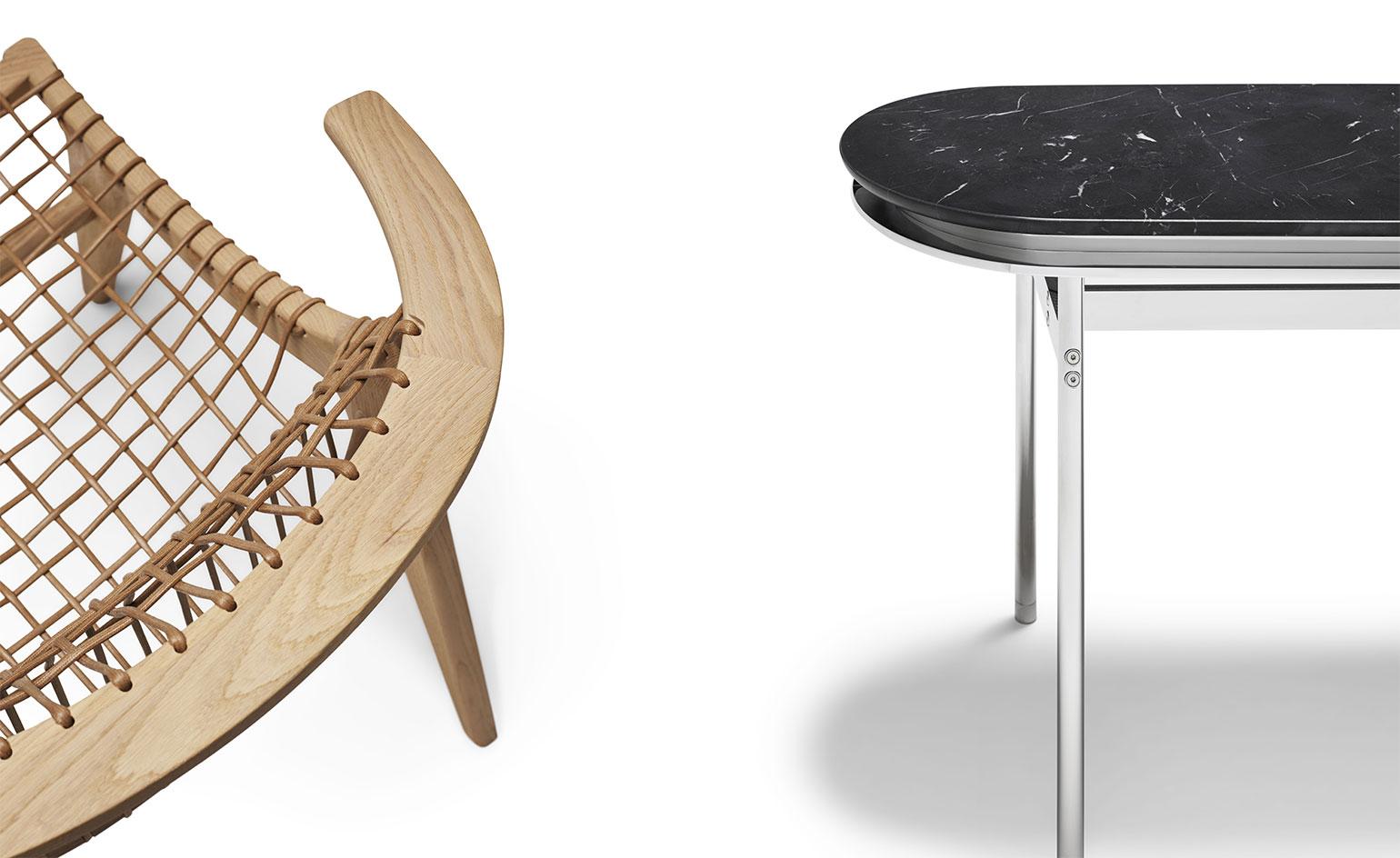
Knoll furniture by Antonio Citterio references historical designs
For his latest collaboration with Knoll, Italian architect Antonio Citterio was inspired by classical Greek culture and historical designs from the 20th century.
Launched during Salone del Mobile 2022, the ‘Klismos’ collection of seats – comprising dining and lounge chairs, a bench, a sofa and a stool – uses archetypal designs as a starting point to create a contemporary, dynamic form. A series of tables comprises large and small models as well as a console, whose essential metal structure nods to Mies van der Rohe’s works.
Citterio was interested in the plurality and depth of TH Robsjohn-Gibbins’ design work, which he used as a starting point for the pieces. ‘What interests me the most of Robsjohn-Gibbins’ work is one of the typologies of sofas he designed: a daybed inspired by the ancient Roman “triclinium”,’ he explains. ‘However, there’s no intention of Robsjohn-Gibbins’ revival in my project for Knoll: if Robsjohn-Gibbins’ daybed and chair are defined by very solid lines, this collection is characterised by a very dynamic shape for the seats, with the supporting elements in wood slender and lightened, combined to the seat elements, the light leather cushions, and the armrests in a game of curves and counter-curves.’
The ‘Klismos’ collection features natural cotton cord woven on slender oak wood structures, with full wood options as well as cushions available for the back. The chairs’ design is further developed into a symmetrical sofa, reminiscent of the classic récamier and featuring the same material palette. The use of wood is rare in Knoll collections, so for Citterio, this material forms the most distinctive trait of the series he designed.
The tables, the architect explains, follow Mies van der Rohe’s idea of less is more, their essential steel structure supporting marble or glass tops.
‘I always try to design pieces that are timeless,’ says Citterio. ‘For Knoll, the references to tradition are present but impalpable, almost subliminal, and in any case, they all combine to create the idea of elegant and – at the same time – welcoming pieces of furniture.’ §
